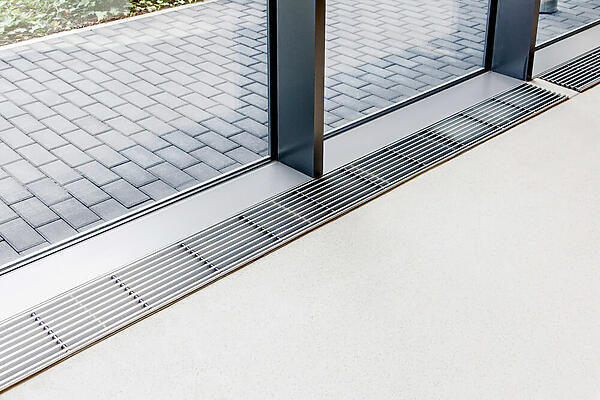11 March 2024 Cariad Marketing

Heating systems have a significant role in creating a comfortable and inviting atmosphere in our homes. Whether gas-powered or electric, your heating needs to be efficient and reliable. In this blog, we explore floor heating where the heat source is installed beneath the floor, unlike traditional radiators that are mounted on walls.
Heated floors work by either circulating warm water through pipes or by passing an electric current through wires to generate warmth. The heat then radiates and warms up the rest of the room.
Radiant floor heating heats a room through a system of pipes or wires that run beneath the surface flooring. There are two types of radiant floor heating. Electric radiant floor heating which uses electric cables or mats embedded beneath the floor, converting electricity into heat that radiates upwards. And hydronic radiant floor heating which utilises heated water circulated through pipes installed under the floor, providing even and comfortable warmth.
An electric underfloor heating system can either be a heated mat or heating cable-based system, both of which convert electric energy into radiant warmth. Pre-made heating mats consist of electric heating cables attached to a mesh backing, simplifying installation under floors, particularly during renovations. The cost to run underfloor heating mats usually depends on how well insulated your floor base is. Insulation boards can reduce heat-up times and increase energy efficiency.
This heating system works by circulating warm water through a system of pipes under the floor. The water is heated by a boiler or heat pump and then circulated through the pipes. The heat from the water radiates up through the floor.
Trench heating is also a type of floor heating. It is a system where trenches are dug into the floor and a heating element, such as pipes filled with hot water or electrical cables, is installed. The trench is then covered with a grille or other finishing material. The average cost of trench heating depends on the room size, grille type and size amongst other factors. This type of heating is ideal for living or office spaces where heating needs to be consistent while keeping costs to a minimum.
It’s important to choose the right heating system for your needs and budget. Whether it’s underfloor heating or trench heating, your heating needs to work for you.
Trench heating offers an efficient heating solution while being aesthetically pleasing. Trench grilles are made in a variety of materials that you can choose from to suit your space. And since the trenches are under the floorboards, it’s a discreet type of heating that won’t get in the way.
Get in touch with us today for more heating advice by giving us a call on 01727 840344.
Leaving a floor heater on all night is generally safe but could lead to higher energy costs. It’s advisable to use a programmable thermostat to regulate temperature and save energy while ensuring comfort during sleeping hours.
The cost of running a floor heater depends on factors like the size of the room, insulation, and the type of heating system. Generally, floor heating can be efficient and cost-effective in the long run compared to traditional heating methods.
The lifespan of floor heating systems can vary, but with proper installation and maintenance, they can last for decades.
Typically, water mixed with antifreeze or specialized heating fluid is used in hydronic floor heating systems, while electric systems don’t require any liquid.
Heated floors can effectively warm a room, providing consistent warmth and comfort from the ground up.
Rugs can be safely placed on heated floors, but it’s essential to choose rugs with breathable materials to allow heat transfer.
Yes, heated floors can be easily controlled with thermostats, allowing users to turn them on and off as needed for energy efficiency and comfort.
While heated floors generally require minimal maintenance, periodic checks for leaks, proper functioning of thermostats, and cleaning of heating elements may be necessary.
Heated floors typically take around 30 minutes to a few hours to reach the desired temperature, depending on the system’s type and size of the room.
Heated floors are generally safe when installed and used correctly, with modern systems incorporating safety features like temperature sensors and circuit breakers to prevent overheating and electrical hazards.
At The Trench Grille Centre, we have a wide range of high-quality grilles that have been carefully designed to add a sense of warmth and style to your space..
Our Linear Stainless Steel grille adds a touch of modern elegance, while the Linear Snap Profile in natural aluminium combines contemporary style with durability. For a timeless, classic look, explore our Natural Wood Roll-Up options in Ash, Beech, Oak, and Sapeli.
If you prefer a sleek and clean finish, our Roll-up Closed Profile grilles in natural aluminium and satin stainless steel are perfect choices. For a touch of opulence, consider our Roll-up Double T-Bar options in black, gold, natural aluminium, and satin stainless steel.
Elevate your space’s ambiance and comfort with our trench heating grilles, each meticulously designed to provide not only exceptional heating performance but also a touch of sophistication. Upgrade your interiors with The Trench Grille Centre and experience warmth and style like never before.
Shop Now